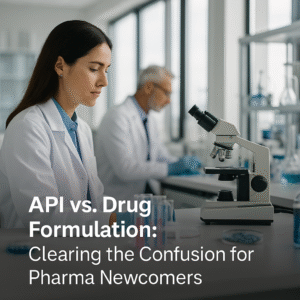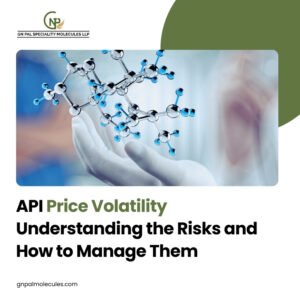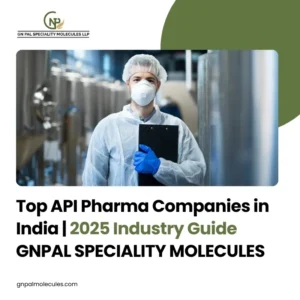
The pharmaceutical world is full of technical jargon that can sound like a different language altogether. Two of the most misunderstood yet fundamental terms are API (Active Pharmaceutical Ingredient) and FDF (Finished Drug Formulation). While they may seem similar or interchangeable to many, they serve very distinct purposes in the lifecycle of a medicine.
So, what exactly are they? And how do they differ?
Let’s break it down in a way that’s easy to understand—even if you don’t have a background in pharma.
What is an API?
API stands for Active Pharmaceutical Ingredient—and it’s exactly what it sounds like.
It’s the key ingredient in any medicine that produces the intended health benefit. Whether it’s reducing pain, fighting bacteria, or lowering blood pressure, the API is the part of the drug that makes that happen.
✅ Think of it as the engine of a car. Without it, the car (medicine) doesn’t run.
APIs can be obtained from:
-
Natural sources (like plants or animals),
-
Chemical synthesis,
-
Or biotech-based processes.
However, on their own, APIs are not usually consumed directly by patients. They often come as fine powders or crystals and require further processing to be made safe, effective, and convenient for human use.
What is a Drug Formulation (FDF)?
FDF stands for Finished Drug Formulation—the final product that is ready for use by the consumer. This includes tablets, capsules, syrups, creams, or injectables.
An FDF includes:
-
The API (the core ingredient),
-
Excipients (inactive substances like binders, stabilizers, solvents),
-
And other components that make the drug easier to consume, absorb, and store.
✅ Think of FDF as the entire car—with the engine (API), plus the seats, tires, dashboard, and frame (excipients and delivery method).
API vs. Drug Formulation: Key Differences at a Glance
| Aspect | API | Drug Formulation (FDF) |
|---|---|---|
| Meaning | Active Pharmaceutical Ingredient | Final consumable form of the medicine |
| Role | Core therapeutic agent | Complete drug including API and additives |
| Form | Usually raw powder or crystal | Tablet, capsule, syrup, injection, etc. |
| Who Uses It | Pharma manufacturers | End users (patients) |
| Purpose | Causes the pharmacological effect | Ensures proper delivery, stability, and efficacy |
| Sale | Not sold directly to consumers | Sold in pharmacies, hospitals, etc. |
Whether you’re a pharmacy student, a healthcare investor, or someone simply curious about how medicines work, understanding the difference between API and FDF helps you grasp how drugs are made, regulated, and consumed.
👉 For example:
-
API manufacturers focus on purity, potency, and consistency.
-
Formulation companies focus on dosage forms, drug delivery, shelf life, and patient convenience.
In a world where India is emerging as the “Pharmacy of the World,” especially in API manufacturing, knowing these distinctions can offer valuable insights into the global pharmaceutical supply chain.
Final Thoughts
In summary, while the API is the heart of the medicine, the Finished Drug Formulation is its body—complete and ready to deliver healing where it’s needed.
By understanding both, you unlock a deeper appreciation for the science and precision behind every pill or syrup bottle on your shelf.
📌 Still curious about how APIs are made or how FDFs are tested for quality? Stay tuned to our blog for more easy-to-understand pharma insights!





